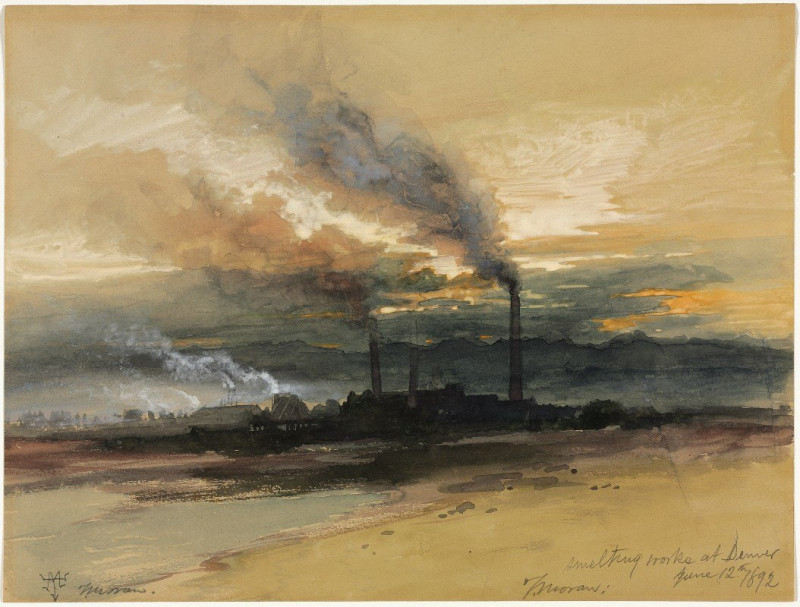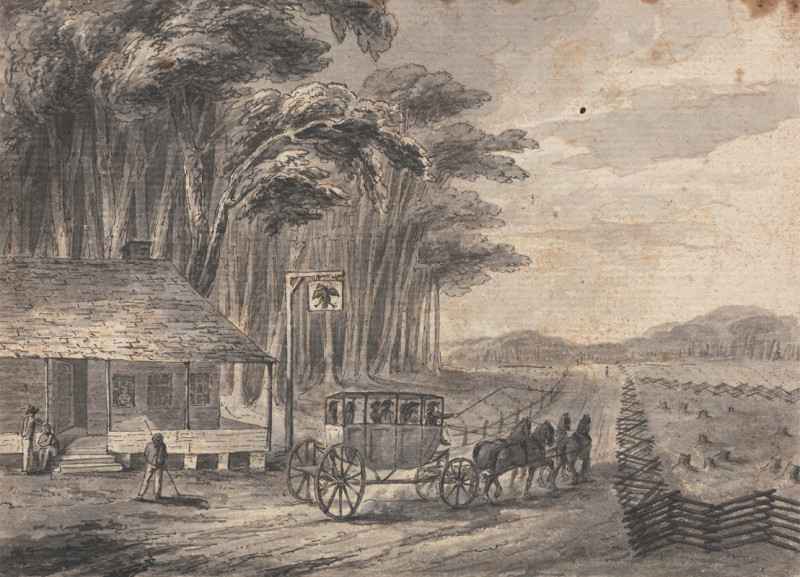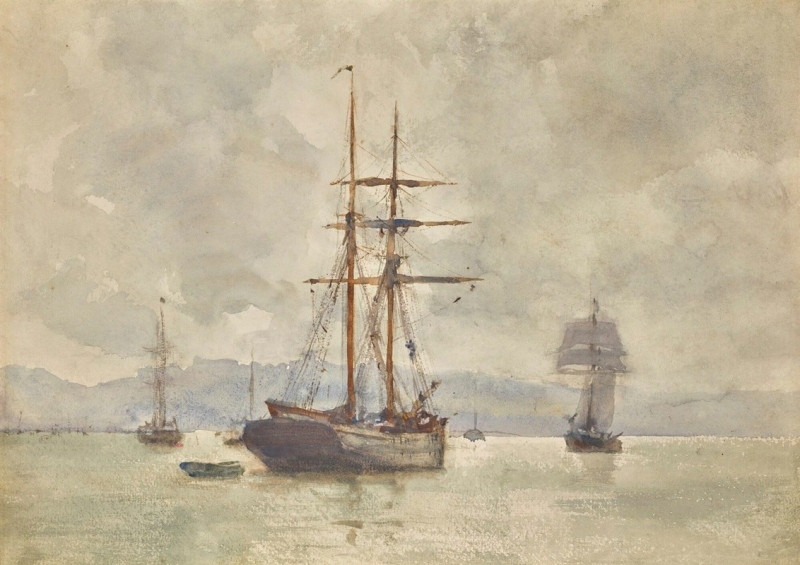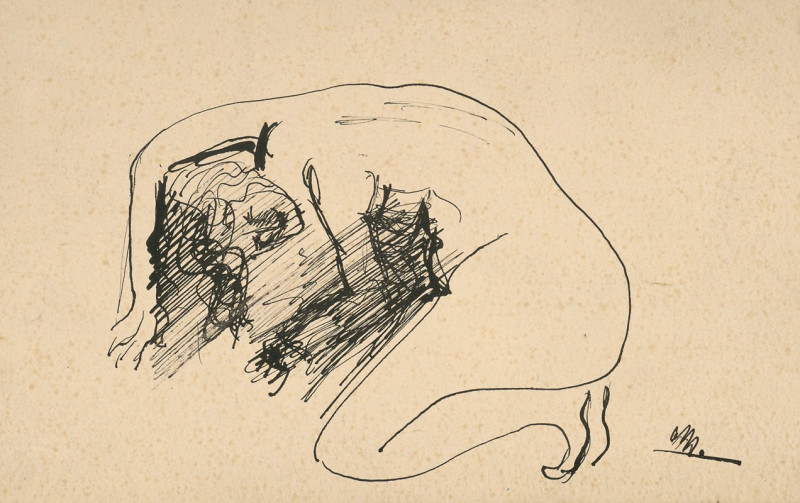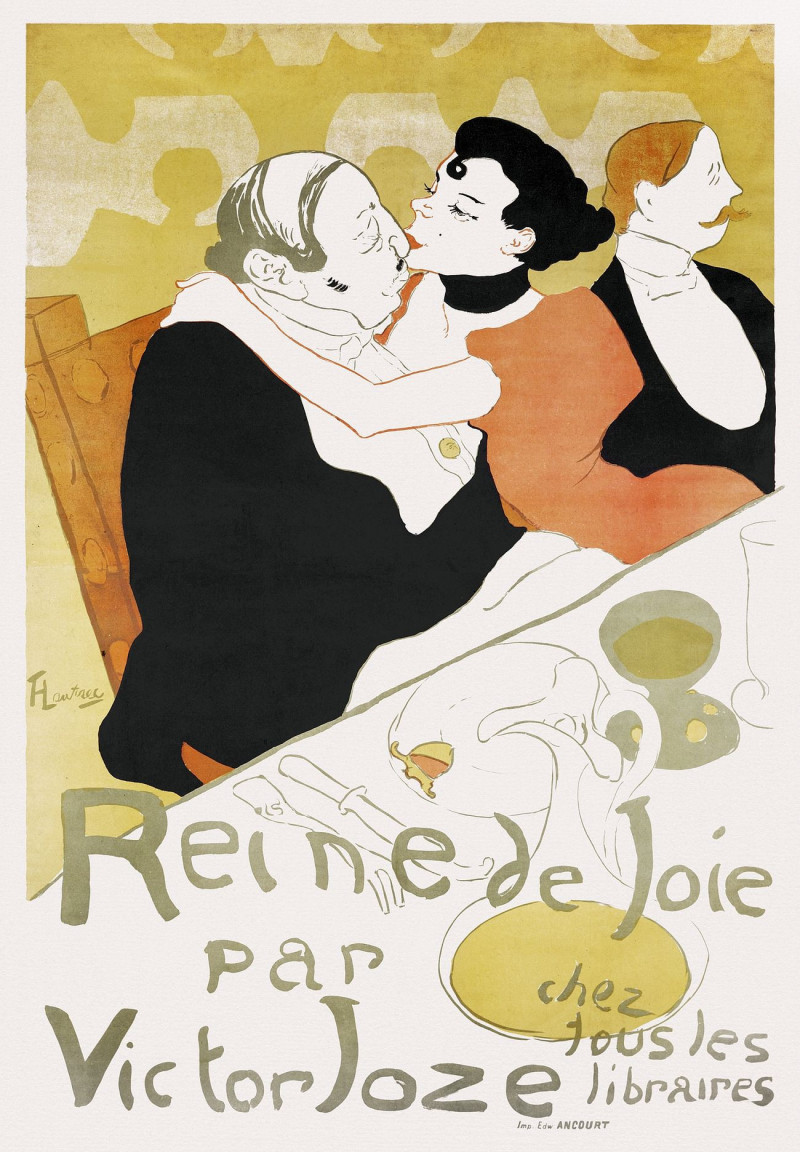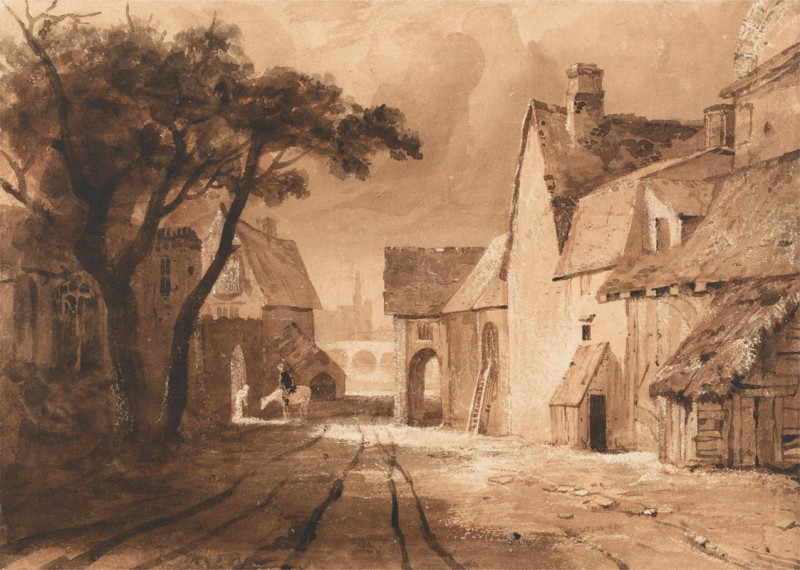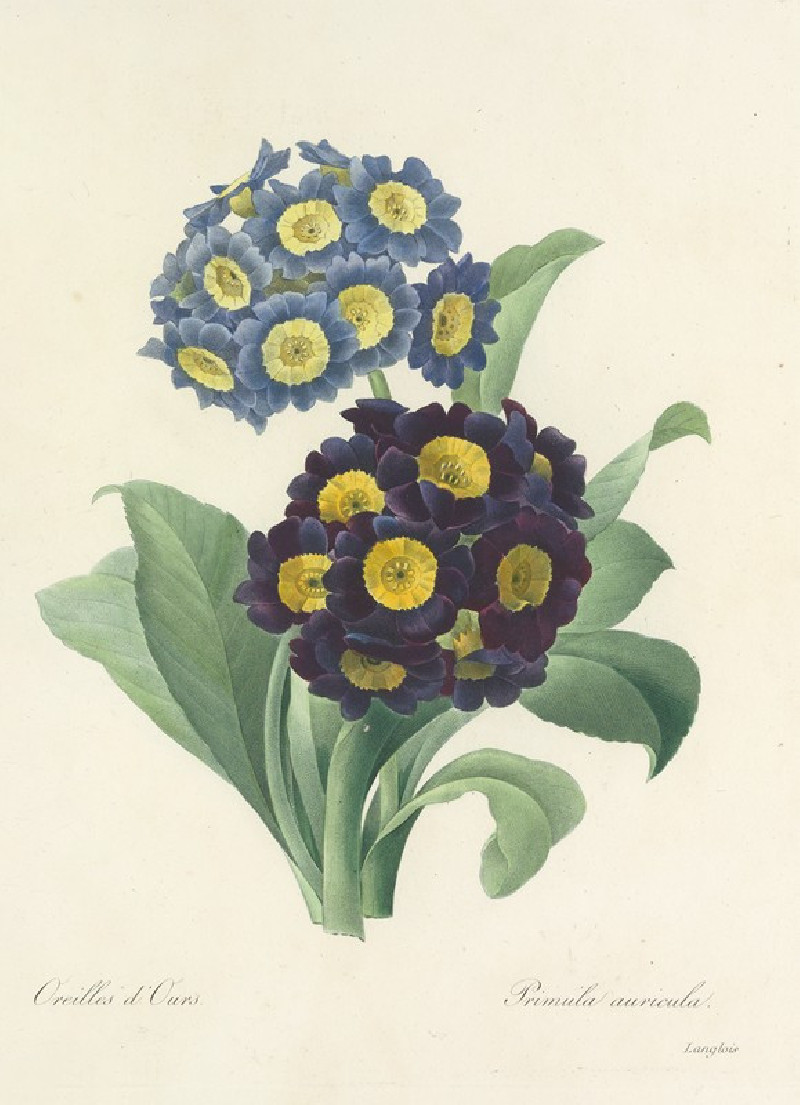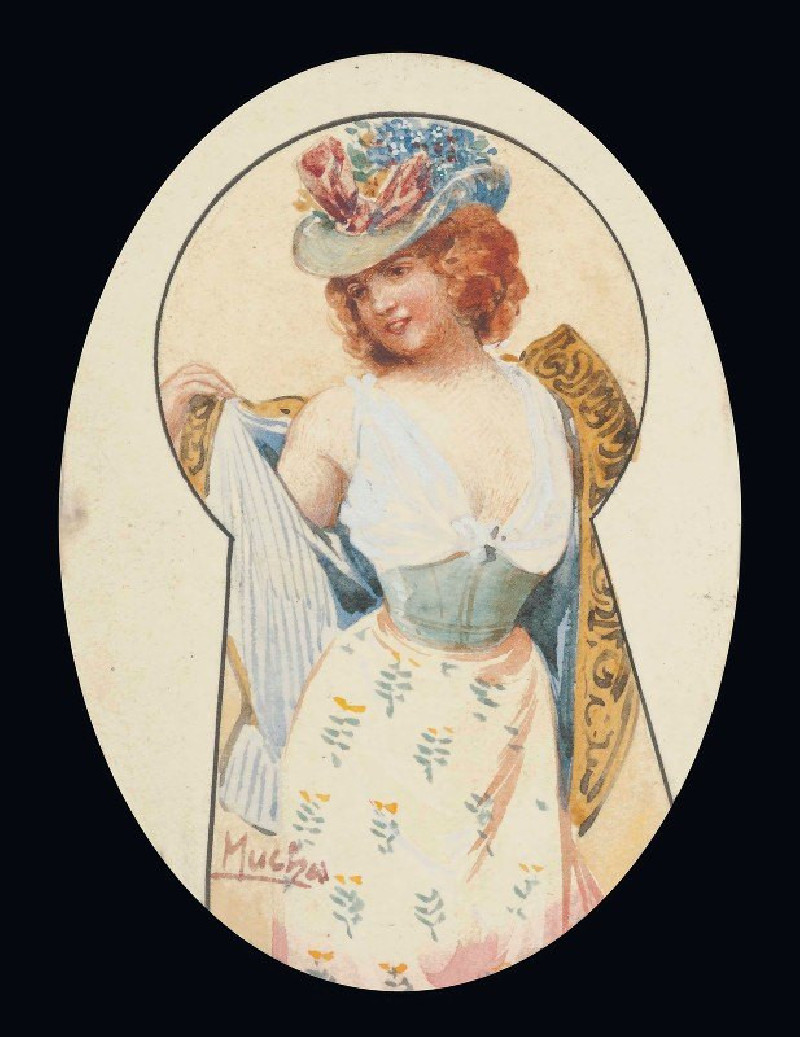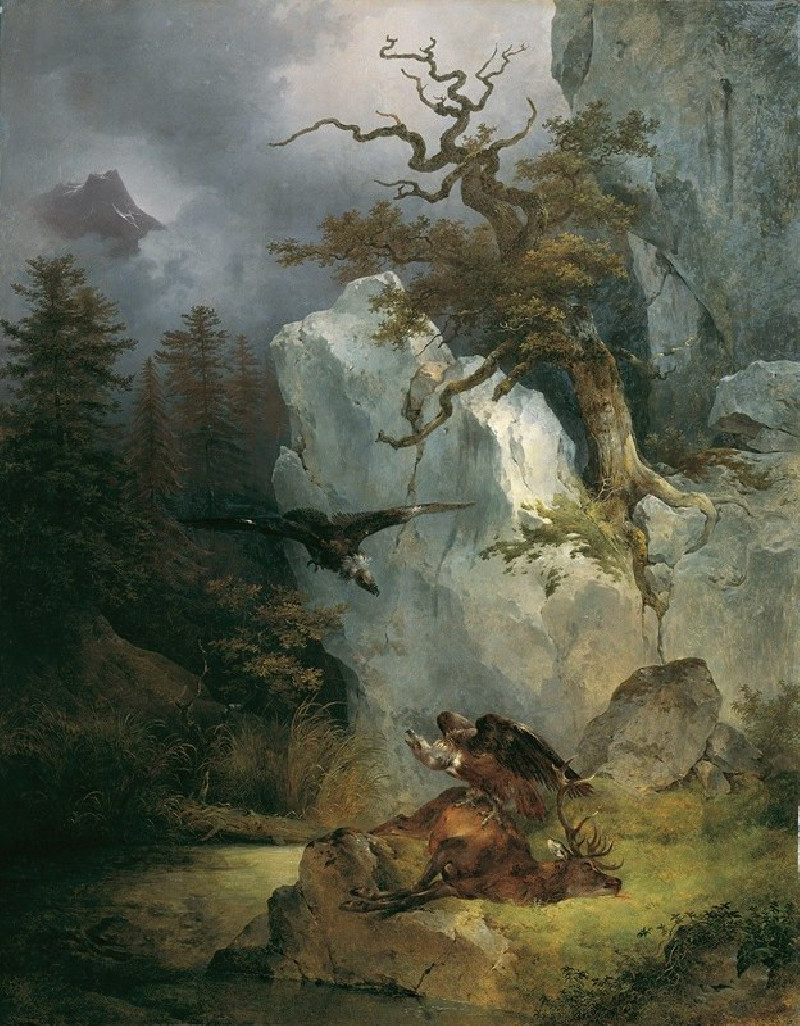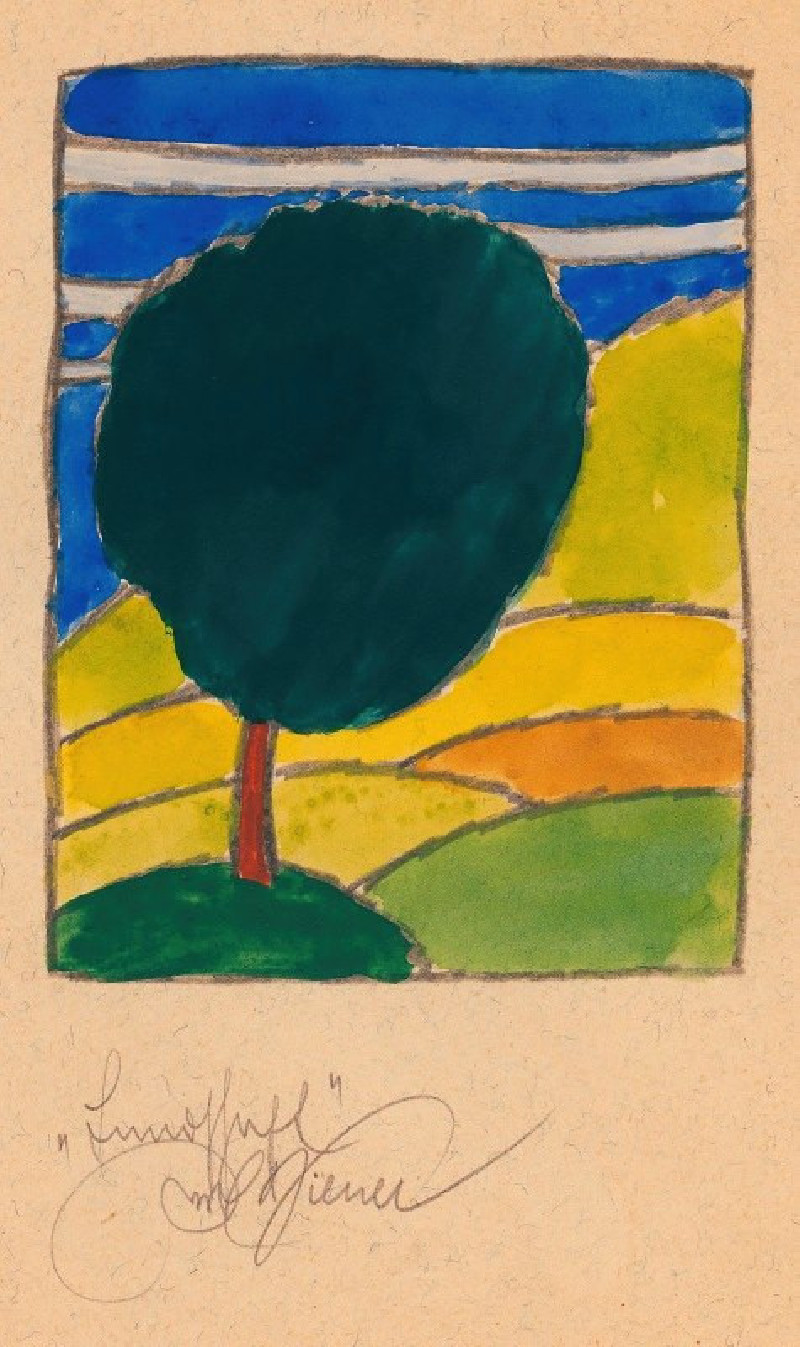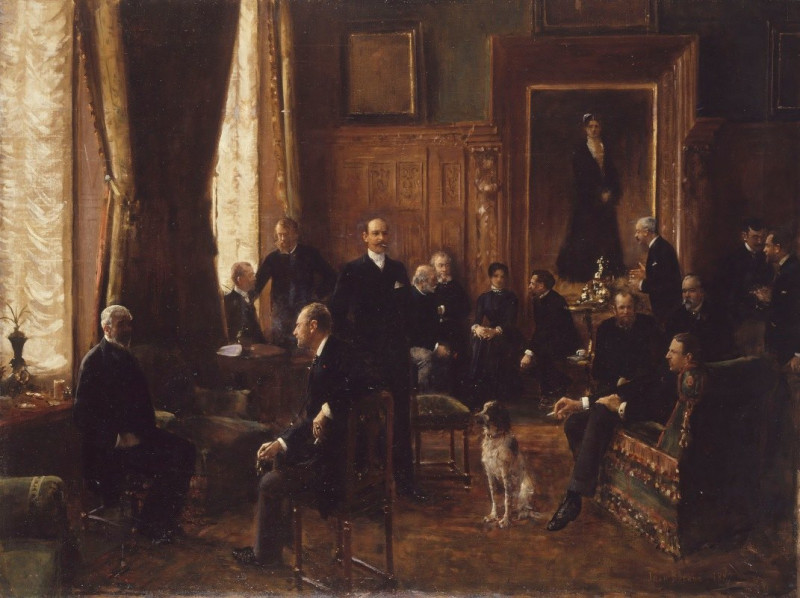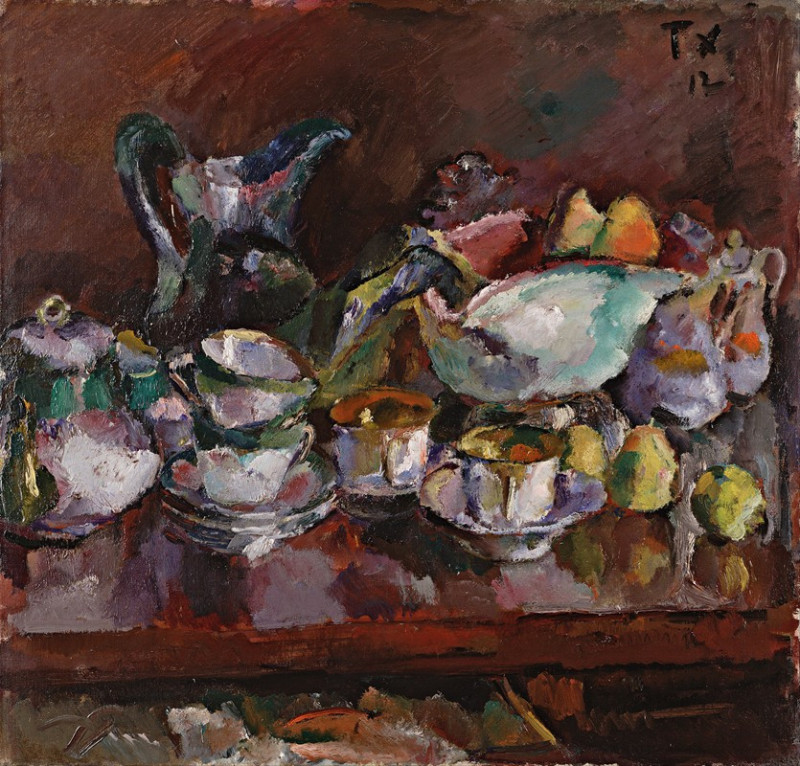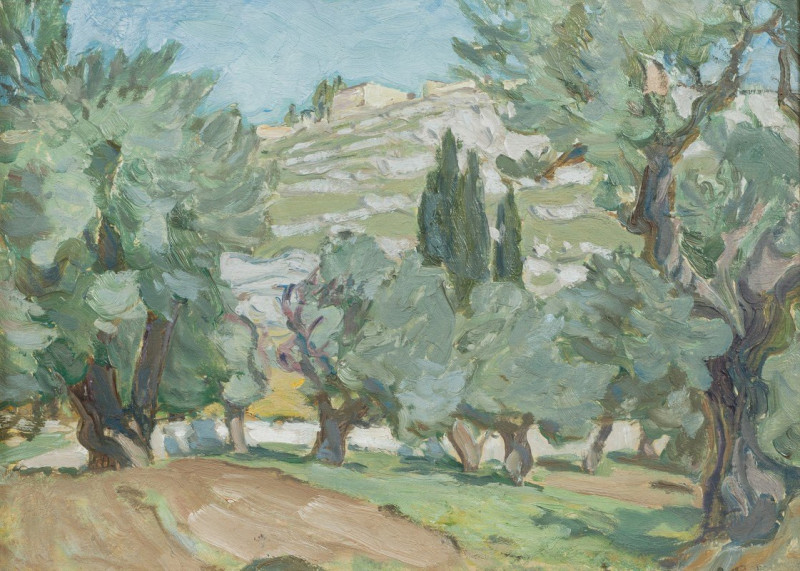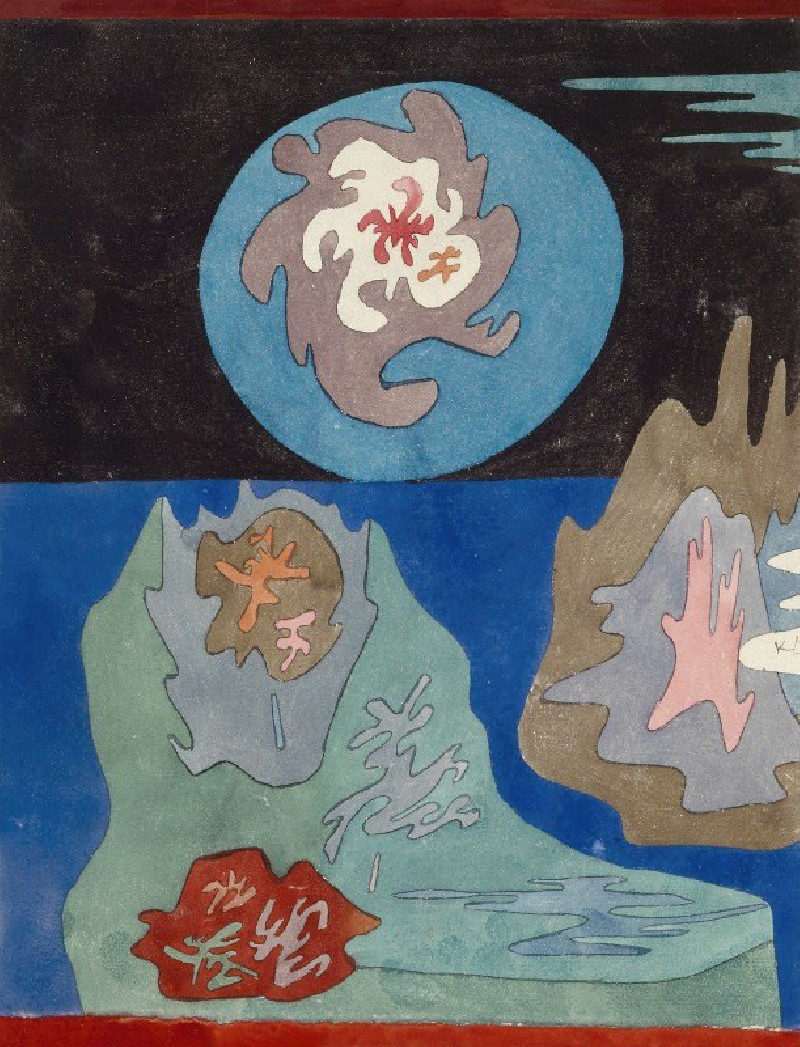With the Dot (1916)
Technique: Giclée quality print
Recommended by our customers
More about this artwork
Paul Klee's "With the Dot," created in 1916, stands as a fascinating exploration of form, emotion, and abstraction that transcends traditional narrative expression. This intriguing piece features a collection of figures and shapes intermingled with lines and dots, which might appear chaotic at first glance but hold a playful and profound subtlety upon closer inspection.At the center of the composition, we note a large, prominent black dot, possibly symbolic, serving as a visual anchor around which the other elements orbit. Surrounding this central motif are various whimsical characters: some resemble mechanical parts, while others take on more recognizable human forms, albeit depicted in a primitive style with lively, sketch-like strokes.These figures seem to interact dynamically within the space, some appearing in motion, which injects a sense of energy and animation into the scene. The sparse use of color focuses attention on the textures and lines created by Klee's pencil, emphasizing the raw and elemental nature of the drawing.Klee's work often delved into the realm of child-like imagination and pushed the boundaries of the abstract and the surreal. "With the Dot" exemplifies his ability to draw viewers into a world that is both enigmatic and intimately relatable, urging a reflection on the simplicity and complexity of forms that populate our inner and outer realities.
Delivery
Returns
Paul Klee was a Swiss-born German artist. His highly individual style was influenced by movements in art that included expressionism, cubism, and surrealism. Klee was a natural draftsman who experimented with and eventually deeply explored color theory, writing about it extensively; his lectures Writings on Form and Design Theory (Schriften zur Form und Gestaltungslehre), published in English as the Paul Klee Notebooks, are held to be as important for modern art as Leonardo da Vinci's A Treatise on Painting for the Renaissance.
































